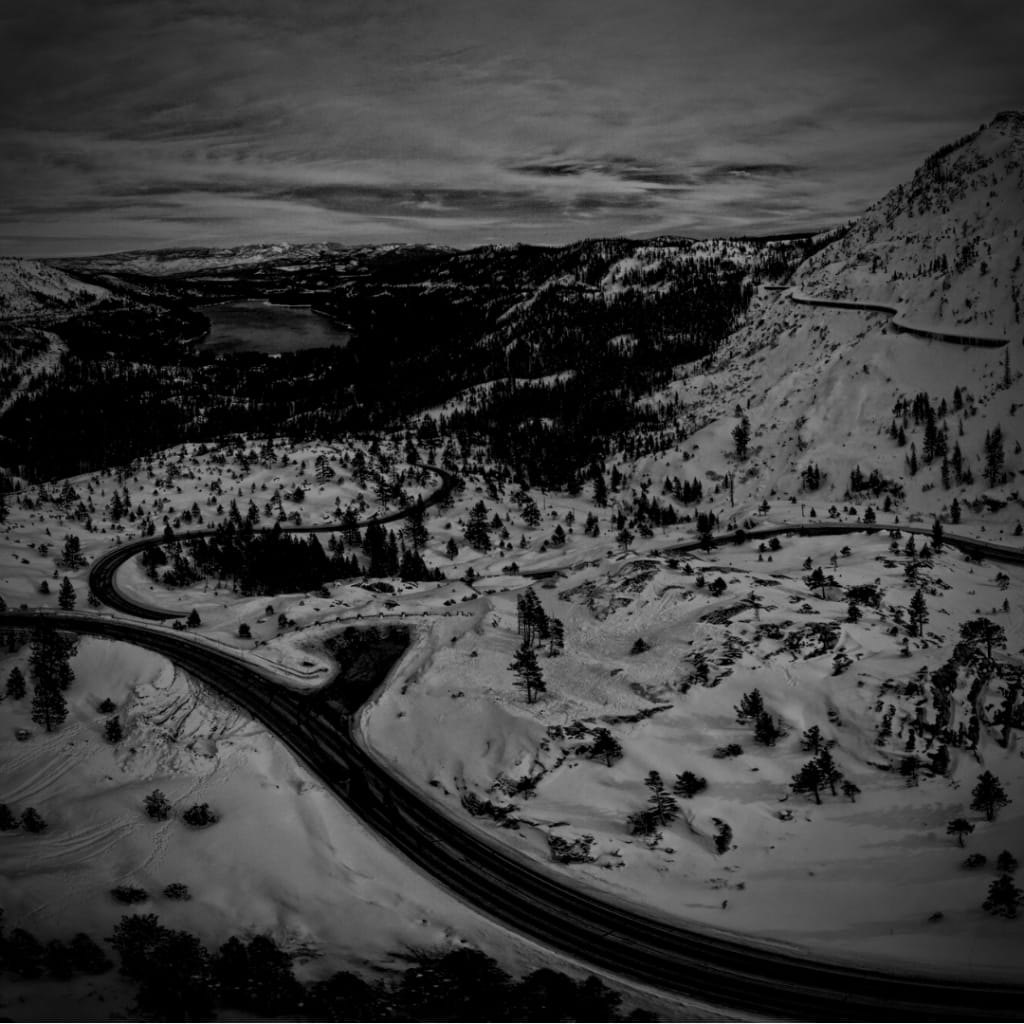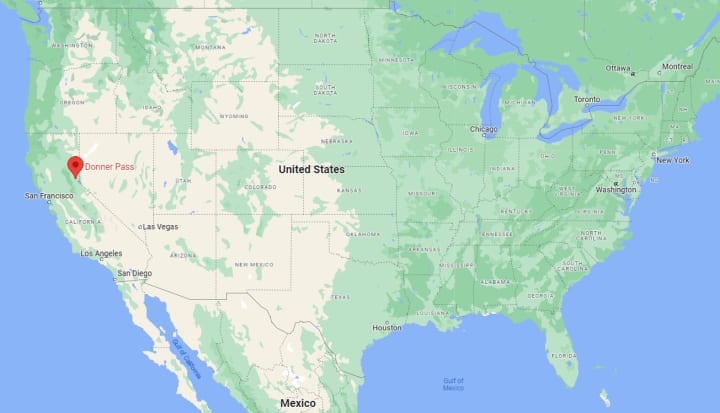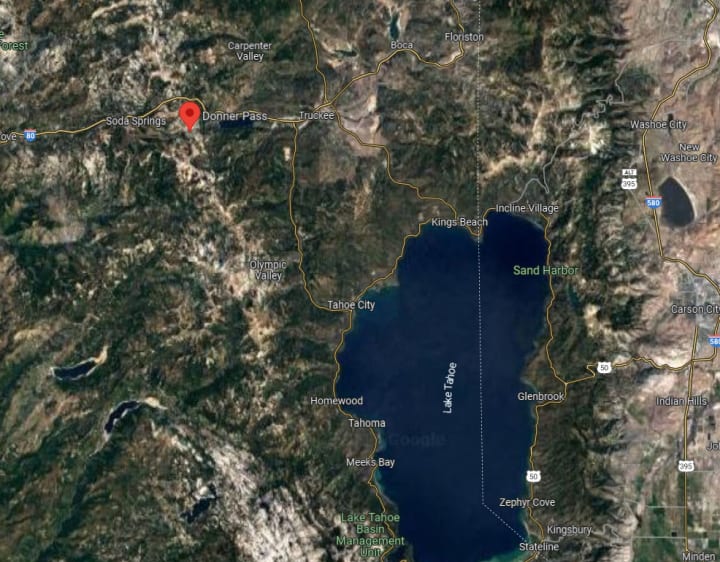The Donner Party
A migration for a better life led to a series of shocking events.

If you're like me, you've probably heard of the Donner Party or the Donner-Reed Party. Many have only heard of it in passing and remember it for cannibalism. After all, without that piece of history, an act of survival that most people would never consider, the Donner Party might have become a footnote in American pioneer history like so many others that died on the journey West. But precisely what led to the tragic events that befell the Donner Party?

Before planes, automobiles, the transcontinental railroad, and decades before the widespread availability of electricity, about 90 emigrants set off. They headed west, traveling by wagon, oxen, and horses in search of better lives.
Spring 1846
There was a known route called the California Trail used by emigrants. The entire trail was about 2,500 miles (4,000 km) long. Timing the migration was crucial, and people typically started their journey in late Spring, when there would be grass for pack animals to eat—but early enough in the year that they could get over the western mountain passes before the snowstorms started.
On May 12, 1846, the caravan departed Independence, Missouri, on the California Trail. They had an unusually late start, having missed the safer time window in mid-April. No one knows why they decided to leave, as their party was the last major pioneer caravan headed out that year. Their late start meant very little room for error in their long journey.
The standard route took emigrants into Wyoming, north through Idaho, and south across Nevada. The caravan traveled the usual way and reached Fort Bridger, Wyoming. It was here they made a fateful decision. They decided to go another way when they received information from a trail guide named Lansford Hastings. Lansford Hastings claimed there was a shortcut through the Wasatch Mountains and straight through the Salt Lake Desert. An experienced mountain man named James Clyman warned the Donner Party not to listen to Hastings or take his supposed shortcut. However, despite the warnings, the caravan decided to follow the shortcut laid out by Hastings.
Unfortunately, when the Donner Party arrived at Weber Canyon in the Wasatch Range near Ogden, Utah, they found a note from Hastings, left on a forked stick, informing them that way was more difficult than he thought. The message also asked them to make camp and wait on him to return so he could show them a better path. And, so, they did as instructed and waited...and waited...and waited. Hastings still hadn't returned eight days later, so the caravan sent a messenger up Weber Canyon to find Hastings. After several days, the messenger returned, bearing instruction from Hastings for the party to follow a completely different route. Trusting the trail guide, the Donner Party followed his instructions.
The new route proved even more problematic than the original one, though, and they had to carve out a road through the thick wilderness and wind around boulders. They eventually made it through the Wasatch Mountains and arrived at the Great Salt Lake—18 days late. The caravan also passed straight through the Salt Lake Desert, just as Hastings had promised, but the five-day crossing nearly killed them all from thirst. The sand in the desert was moist and deep, and their wagons became bogged down, slowing their progress considerably.

Instead of saving time, the shortcut added nearly a month and 125 miles (201 km) to their journey. By the time they crossed the Sierra Nevada Mountains, they'd wasted so many days listening to Lansford Hastings that winter weather was just around the corner.
October 28, 1846
With only about one hundred miles (160 km) left in their journey, a blizzard hit, blocking the mountain pass and trapping the Donner Party in a frozen wilderness. Several feet of snow fell, forcing them to retreat to nearby Truckee Lake, where they had no choice but to try and wait out winter in ramshackle tents and cabins. Soon after they hunkered down for the harsh winter, the first of their party began to die from starvation, as most of their supplies and livestock had been lost along the trail.

Even worse, most of the caravan was inexperienced in mountain trails, survival, and severe winters. With more than half of the party younger than 18—six of them infants—they lacked the skills and resources to make it through without suffering some consequences.
December 16, 1846
The Donner Party split, sending off seventeen of their strongest to find help. They fashioned makeshift snowshoes and set off into the mountains. After several days of wandering without food, they were all on the verge of collapse. With nothing to eat, the small rescue team resigned themselves to the only method of survival they could think of...cannibalism.
Two indigenous men, Salvador and Luis, had joined the Donner Party shortly before the snowfall stranded them all. They went with the fifteen, hoping to aid the rescue effort of the entire caravan. When talks of cannibalism began, Salvador and Luis refused to entertain the idea. They felt threatened and took off on their own to avoid being eaten.
The remaining hiking party considered drawing lots to pick a human sacrifice and mulled over the idea of having men square off in duels—but nature struck first, and some of them died naturally. Their corpses were roasted and eaten.
A few days later, Salvador and Luis were found by the now-cannibals. The two were exhausted and lying in the snow but still alive. A member of the hiking party, William Foster, proceeded to shoot them both in the head. Salvador and Luis were then butchered, roasted, and eaten. Soon after the hiking party ate Salvador and Luis, they stumbled upon a village of Native Americans that gave them food and provisions to continue their journey.
The meat provided the remaining members the necessary energy to continue on. A month later, seven of the original fifteen made it to a ranch in California, where they helped organize a search and rescue for the people stuck at Truckee Lake.
While all this was happening, back at Truckee Lake, things weren't much better. Food was scarce, and supplies were running out. To survive, the stranded emigrants slaughtered their pack animals. When the pack animals ran out, they killed and cooked their dogs. They even found themselves gnawing on bones, eating tree bark, and picking off the animal hide roofs of the cabins to boil into an edible paste. When it all ran out, the only thing left to eat was the frozen corpses of their fallen comrades.

February 1847
The emigrants stranded at Truckee Lake spent five months trapped in the mountains. Rescuers knew where they were for about two months but couldn't reach them. Pack animals couldn't traverse the deep snowdrifts, but a rescue crew finally made it in February of 1847, bringing only the food and supplies they could manage to carry on them. When the first rescuers arrived, most of the remaining Donner Party was too weak to travel. Over the next two and a half months, four relief teams were sent in, and even with the added supplies and efforts, several of the original emigrants died on the way out of the mountains.
March 1847
A rescuer named John Stark, and two other rescuers, stumbled across 11 emigrants from the Donner Party. The emigrants were primarily children. An earlier relief group had left them in the mountains for some reason. Two rescuers each grabbed a kid and began heading down the mountain to safety. John Stark, though, refused to leave anyone behind. He guided the remaining nine all the way down the mountain. Most of the children were too weak to walk on the way, so John Stark picked up and carried two at a time for a few yards, set them down, and went back to fetch more. He continued this all the way down the mountain, eventually leading all nine to safety.
April 1847
The very last person to be rescued was a man named Lewis Keseberg. When rescuers found him, they said he had lost his sanity. He had human liver and lungs in a pot and had surrounded himself with the half-eaten corpses of his former travel companions. Keseberg was accused of murder, but nothing was ever proven.
Remembering the Donner Party
The Donner Party is remembered by most as one of cannibalism, but it's really a story of the search for a better life and the strength of will to survive. Some of the details of their journey are still debated, and we'll never truly know what happened, but we do know that f the original ~90 emigrants in the Donner-Reed Party, only about half made it out alive. It is said that half of the survivors engaged in cannibalism on their journey. It's easy to play armchair pioneer, but very few have faced the types of difficult choices those in the Donner Party did. Who's to say what anyone would do in those circumstances? Would you have what it takes to survive?
Much more has been written about the Donner Party than here. Check out the links below to learn more about this piece of horrific American history.
Relevant & Related
- Check out a documentary titled The Donner Party: A Film by Ric Burns.
- A well-researched book on the journey—Desperate Passage: The Donner Party's Perilous Journey West by Ethan Rarick.
- A seven-part series on YouTube tracks the trail of the Donner Party: Following the Trail of the Donner Party. Seeing many sights the Donner Party encountered as they traveled is fascinating.
- Don't miss another read about the caravan in The Indifferent Stars Above: The Harrowing Saga of a Donner Party Bride by Daniel James Brown.
- History Hunters went Searching the Donner Party's final campsites.
- A full movie titled The Donner Party is available to watch for free.
- You won't want to miss Nathan Hale's illustrated children's book Donner Dinner Party.
- Ask a Mortician on YouTube discusses more about the pioneers in The Donner Party: What Really Happened?
- And some of the Messed Up Things That Actually Happened On The Oregon Trail.
- Lake Tahoe is only about 20 miles (~30 km) away from Donner Pass. There are tales of a legendary monster in the lake. Find out how the Donner Party and the monster may be related in my article Tracking Tahoe Tessie Down.
~
Originally published in my weekly newsletter, Into Horror History—every week, I explore the history and lore of horror, from influential creators to obscure events. Cryptids, ghosts, folklore, books, music, movies, strange phenomena, urban legends, psychology, and creepy mysteries.
About the Creator
J.A. Hernandez
J.A. Hernandez enjoys horror, playing with cats, and hiding indoors away from the sun. Also, books. So many books—you wouldn't believe.
He runs a weekly newsletter called Into Horror History and writes fiction.
https://www.jahernandez.com






Comments
There are no comments for this story
Be the first to respond and start the conversation.